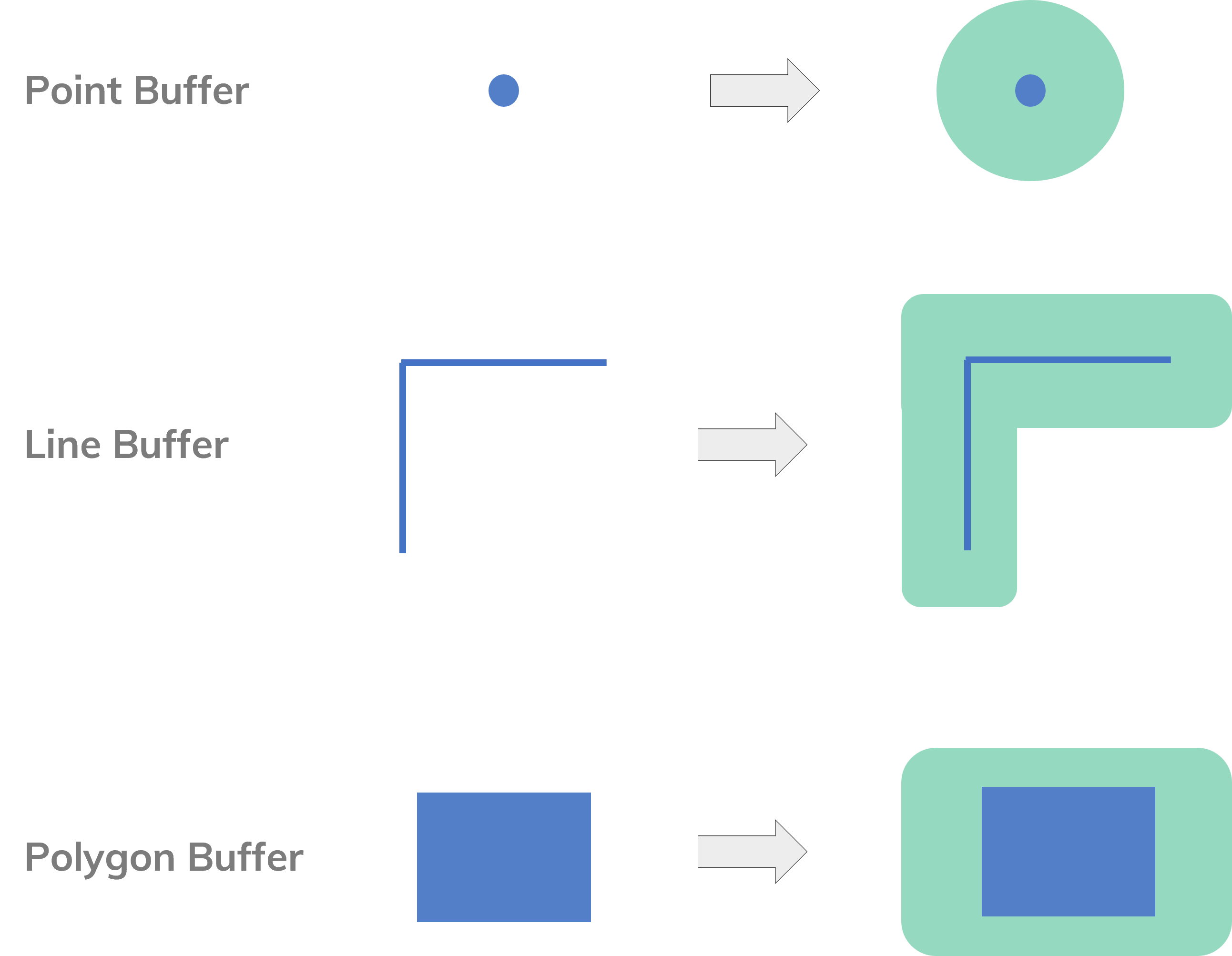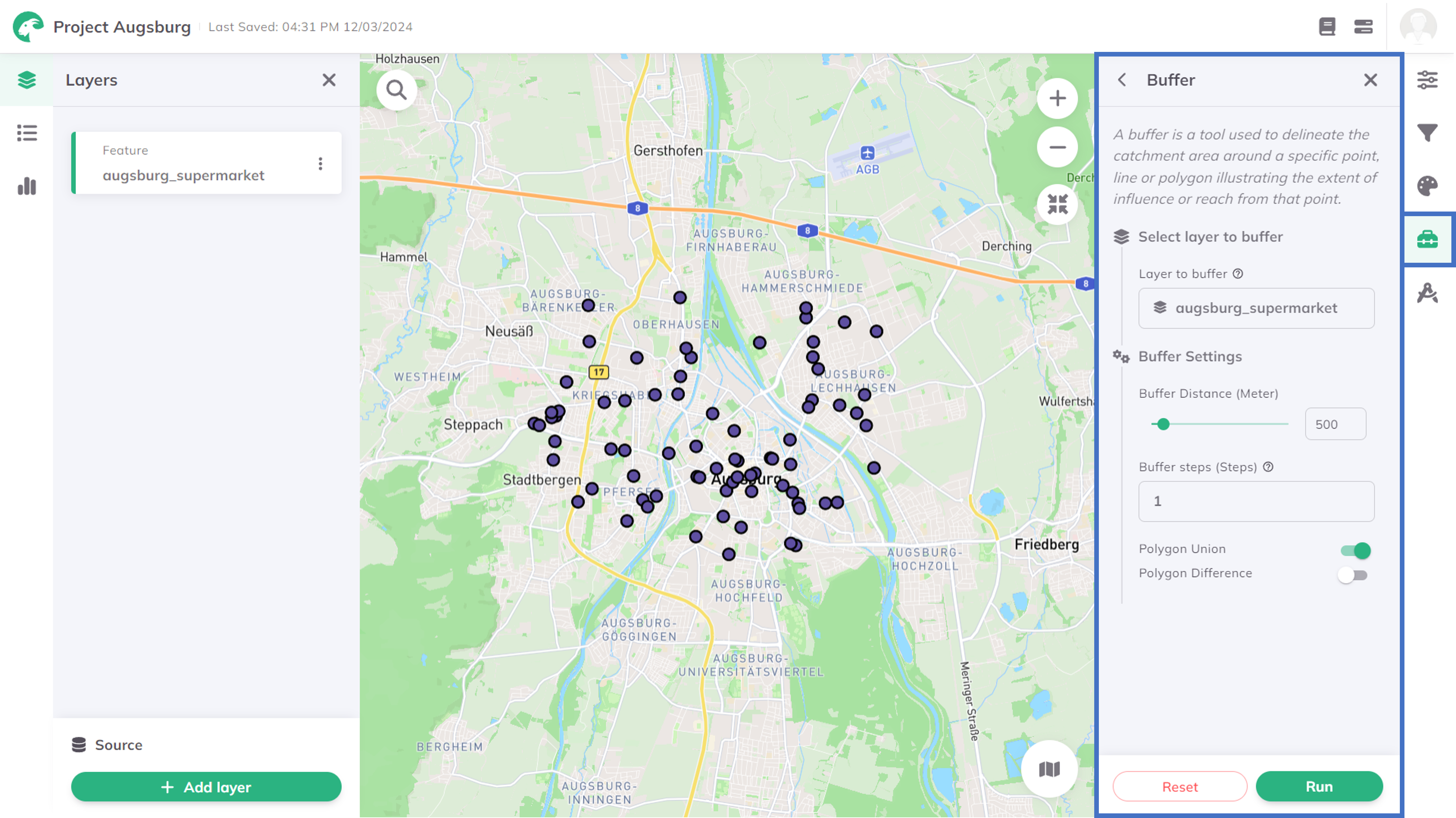Buffer
The buffer creates a zone around given points, lines, or polygons with a specified buffer distance.
1. Explanation
A buffer is a tool used to delineate the catchment area around a specific point, line, or polygon illustrating the extent of influence or reach from that point. Users can define the distance of the buffer, thereby customizing the radius of the area covered.

2. Example use cases
- How many people live within a 500m buffer distance from the train station?
- How many shops are accessible within a 1000m buffer distance from a bus stop?
3. How to use the tool?
Toolbox Geoprocessing menu, click on Buffer.
Select layer to buffer
Layer to buffer, around which you like to create the buffer.Buffer Settings
Buffer Distance how many meters from your points, lines, or shapes the buffer should extend.Buffer Steps the buffer should be divided.Depending on which geometric results you are aiming for, you can first select, if all geometries shall be combined (Polygon Union). This means, if e.g. a buffer is created around neighboring points, whether you like to have single buffers (no union) or combined buffers (union) as a result.

In addition, if you decide on a Polygon Union, you can choose whether you like to have each buffer as a filled polygon (no difference) or if you like to apply a geometric difference between each buffer step (difference).

- No Union
- Union
- Union + Difference
No Union
If you calculate buffers without a union, GOAT will generate single buffers around each input geometry.
Polygon Union.Run. This starts the calculation of the buffer.Results

Polygon Union
The Polygon Union creates a geometric union of all steps of the buffer polygons. It combines multiple polygons into a single polygon that encompasses all the areas of the individual polygons, i.e. the buffer with the biggest extent also includes all buffer areas of the smaller extent. This approach is useful if you want to see the total area covered by all your buffer steps combined.

Polygon Union.Run. This starts the calculation of the buffer.Results

Polygon Union + Polygon Difference
The Polygon Difference operation creates a geometric difference of the buffers. It subtracts one polygon from another, resulting in polygon shapes where the buffers do not overlap.

Polygon Difference.Run. This starts the calculation of the buffer.Results

Want to style your buffers and create nice-looking maps? See Styling.